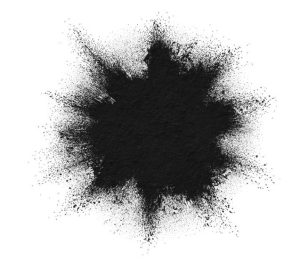
Why does rubber contain carbon black?
2024-02-01
In our daily lives, rubber plays an important role and is widely used in tires, rubber products, rubber pipes, and other fields. Carbon black, as an important additive, is widely used in the production of rubber products. This article will introduce the definition, properties, and role of carbon black in rubber, and also explore the application of different types of carbon black in rubber products.
1. What is carbon black?
Carbon black is a black powder composed of carbon elements with a high degree of purity and crystallinity. It can be obtained by burning hydrocarbons or petroleum products. Carbon black has a high specific surface area and adsorption capacity, can adsorb gases and liquids, and has excellent conductivity and wear resistance.
The application of carbon black in the rubber industry can be traced back to the late 19th century. Initially, carbon black was used as a filler in rubber products to improve their strength and wear resistance. With the development of science and technology, the application scope of carbon black continues to expand, and now it has become one of the indispensable materials in the rubber industry.
2. The role of carbon black in rubber
Carbon black plays multiple roles in rubber. First, carbon black can increase the strength and hardness of rubber, improving its wear resistance and durability. Secondly, carbon black has excellent thermal conductivity, which can help rubber dissipate heat and improve the high-temperature resistance of rubber products. In addition, carbon black can also increase rubber's tensile strength and tear resistance and extend rubber products' service life.
In addition to the above effects, carbon black can also improve the weather resistance and anti-aging properties of rubber. It can absorb ultraviolet rays, reduce the damage of ultraviolet rays to rubber, and extend the service life of rubber products. In addition, carbon black also has certain anti-mildew properties, which can reduce the growth of mold on the surface of rubber products and maintain the appearance and performance of rubber products.
3. Other applications of carbon black outside the rubber industry
In addition to its application in the rubber industry, carbon black is also widely used in other fields. For example, carbon black can be used as a filler in inks, pigments, paints, and coatings to improve their color and durability. In addition, carbon black is also used in the anti-static treatment of electronic products, plastic products, and rubber products, as well as rubber seals, rubber pipes, and other fields.
4. Types of carbon black used in rubber
Depending on the grade and characteristics of carbon black, it can be divided into multiple grades. Different brands of carbon black have different particle sizes, specific surface areas, and structures, and are suitable for different rubber products. For example, highly wear-resistant carbon black is suitable for manufacturing highly wear-resistant tires, while highly elastic carbon black is suitable for manufacturing highly elastic rubber products.
5. Excellent carbon black supplier
If you want to choose high-quality carbon black as an additive for your rubber products, Dery carbon black must be a choice you cannot miss. As a professional carbon black manufacturer, Dery provides you with high-quality products and excellent services. Welcome to contact us. Get detailed ordering information and services!
As an important additive for rubber products, carbon black can enhance rubber strength, wear resistance, and durability. It also improves rubber's thermal conductivity, weather resistance, and aging resistance. In addition to the rubber industry, carbon black is also widely used in other fields. According to different carbon black grades, the type of carbon black suitable for different rubber products can be selected. Through the rational use of carbon black, the performance and life of rubber products can be improved and people's different needs for rubber products can be met.
Previous page:How much carbon black will be in tires?

